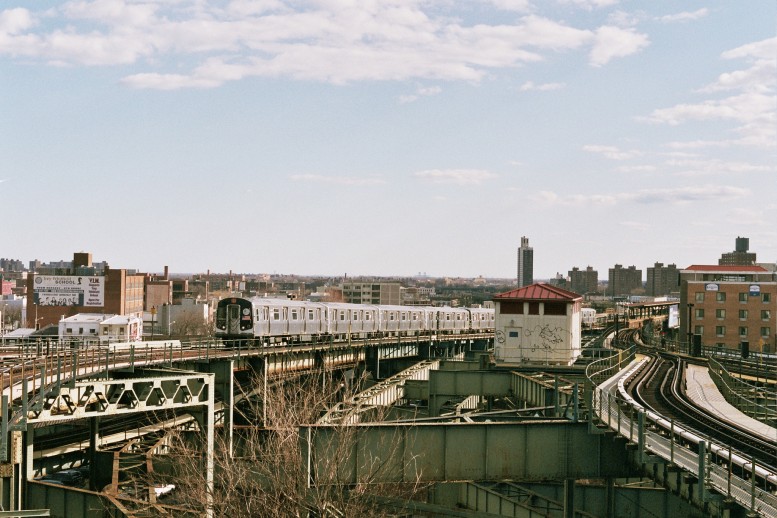On the last day of July, the de Blasio administration quietly introduced a key piece of its plan to build 80,000 affordable units of housing: mandatory inclusionary zoning. The framework will require market-rate developers to set aside at least 25% of their units in each new building as affordable housing. As the city rezones several neighborhoods across the five boroughs, they’ll impose the policy along with the updated zoning—beginning with East New York.
But there’s a loophole in the policy that’s barely seen the light of day. New buildings with 10 units or less won’t have to abide by the new mandatory affordable rules. And that’s huge for East New York, where virtually all new market-rate construction is three or four-story masonry structures with fewer than 10 apartments. Taller steel-frame buildings cost more to build and are more to challenging to finance, particularly if they have subsidized units. Rents in the area simply aren’t high enough to justify the cost.
YIMBY has covered several of these developments recently, including 717 and 727 Sutter Avenue, a series of four-story buildings with 67 units in the New Lots section of the neighborhood, and a little project at 2746 Fulton Street, in the soon-to-be-rezoned swath of the hood.
In fact, the largest market-rate building filed in East New York this year (so far) will have just 14 units. Every other developer has divvied up their larger projects into buildings with 10 units or less. By building smaller, developers save money on construction. And they get to duck the city’s expensive parking requirements, which generally kick in once new buildings grow beyond 10 units.
So will builders start dividing their units to avoid the new mandatory affordable rules, just like they’ve done for parking requirements? Well, City Planning has thought of that. Sources tell us that the rules for mandatory inclusionary zoning will prevent builders from splitting up units to sidestep the 10-unit threshold. Or the city could simply require developers of larger projects to rent 25% of their units at below-market rates, regardless of whether they’re in the same building.
If the 10-unit rule becomes a reality, it would go a long way toward protecting small, market-rate developers in cheaper areas like East New York, the Bronx, and Staten Island. (Jerome Avenue in the Bronx and Bay Street in Staten Island are both slated for rezonings in the next year or two.)
“For buildings with 10 units, it doesn’t make sense for the owners to have to set aside two and a half affordable units,” said Joe Marvilli, a press officer for the Department of City Planning.
Since 2000, public records show that 94,900 units were built citywide in buildings with less than 10 units, out of 296,746 units total. That means a third of all the apartments built in the last 15 years would be exempt from mandatory inclusionary zoning.
The Department of City Planning will officially release its proposals for the East New York rezoning, mandatory inclusionary zoning, and its planned zoning tweaks for affordable and senior housing on September 21.
The public review process—known as ULURP—will kick off for all three plans then. Since the zoning tweaks (officially known as “Zoning for Quality and Affordability”) and MIZ are citywide policies, they need approvals from all 59 community boards, five borough presidents, the City Planning Commission and the City Council.
Subscribe to YIMBY’s daily e-mail
Follow YIMBYgram for real-time photo updates
Like YIMBY on Facebook
Follow YIMBY’s Twitter for the latest in YIMBYnews


The East New York fantasy continues.
ENY residents will beat and rob the new middle-class apartment dwellers. Their apartments will be burglarized while they are at work. It’s already happening in Flatbush, Kensington and East Flatbush. New more prosperous residents move in and come home from work at nigh to find their apartments cleaned out.
East New York will gentrify and become much safer eventually, no doubt about it. Current residents in relatively cheap, rent regulated/protected apartments will be fine. They just need to help themselves by understanding those protections, never being intimidated by legal proceedings and resisting pestering eviction efforts by speculators. The proof of that is the thousands of less monied, less priviledged tenants/residents who have hung in there, now side by side with the Yuppies and Millenials in the increasingly pricey neighborhoods of uber hipster Williamsburg and Greenpoint, stroller/soccer mom Carroll Gardens, Cobble Hill and Senator Shumer Park Slope (even if most of the old Bodegas got priced out…).